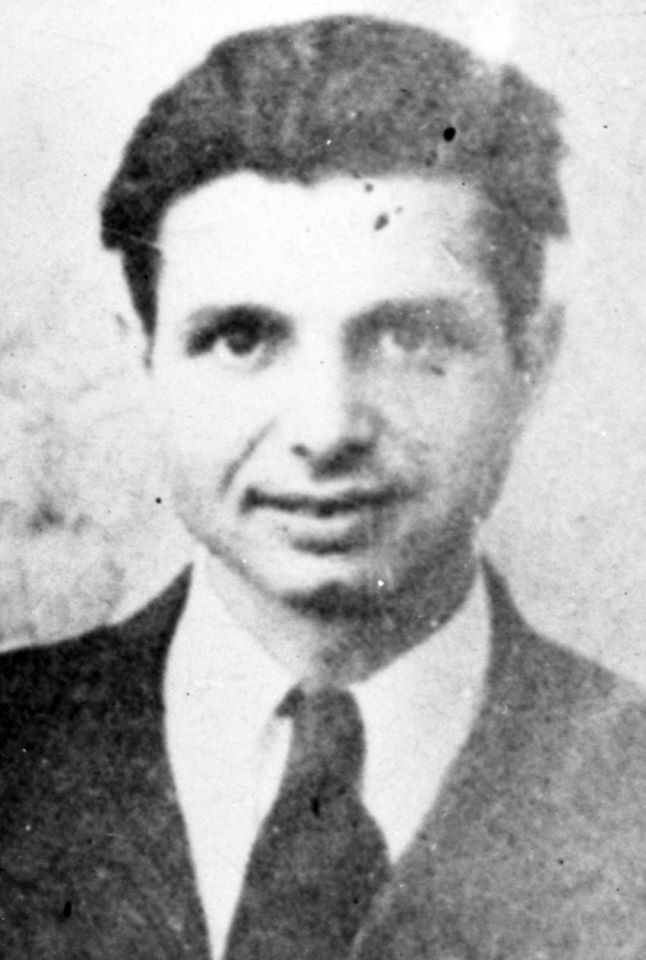MORDECAI (MORDO) NAHMIAS - LAZO

Mordecai (Mordo) Nahmias-Lazo was born in 1923 in Bitola, as one of the four children of Sol and Joseph Gavriel. For a time, the Nachmias family lived in Belgrade, where their father, Joseph Gavriel, had his own antique shop. From an early age, Mordecai had a sense of justice, temperament, and patriotism. During his stay in Belgrade, Mordechai was a general worker.
In 1941 and the capitulation of the Kingdom of Yugoslavia, Mordechai's family returned to his native Bitola. Due to the difficult circumstances, the family was in dire financial situation, and Mordechai himself did not have a permanent job. During this period he was a member of the leadership of the ‘ken’ (ken-club, part of the organization) of the youth organization of working Jewish "Tehelet Lavan" in Bitola.
In the chronicles of Tomislav Simjanovski, it is stated that Mordecai was teaching the Jewish children in the school "Laskolia" in Bitola. He was called Haham because he was very wise (Haham or Hakham is a term used in Judaism to refer to a wise or skilled person, especially a person who knows the Torah well). He had a long beard, and some considered him a priest because he was helping with the religious ceremonies, especially with the Jewish funerals in Bitola. Few at the time could have guessed that the Haham was the link between the city and the partisans. He was helping the people of Bitola who wanted to go to the partisan detachments and fight for freedom, and he did so with a number of Jews. In 1941, Mordechai Nachmias became a member of the Communist Party of Yugoslavia (KPJ), with the support of other members of his family who were also helping the People's Liberation Movement. The family house of Nachmias in Bitola, located at 16th Vojvoda Gligor Street, served as a secret meeting place between the progressive citizens of Bitola and as a hiding place for the persecuted fighters and illegals from the resistance movement, including Stiv Naumov, Vera Aceva, Vancho Prke, etc. Mordechai was also a member of the Bitola District Committee, which was established in December 1941 together with Isak Sarfati, Beno Ruso, Sarina Peso, Isak Kamhi and others.
On 6 July 1942, on the mountaing of Bigla, next to the village of Zlatari, the second partisan detachment named "Damjan Gruev" was established, and Mordechai Nachmias joined this group of the resistance movement, along with other Jewish youth from Bitola: Pepo Peso, Mordo Todolano and others. Here he got the partisan nickname - Lazo. The detachment operated on the territory under Italian occupation and worked on holding meetings and conferences in the villages explaining the program of the resistance movement, as well as gaining new fighters and establishing new military formations.
In December 1943, Mordechai Nachmias-Lazo moved to the Third Macedonian Strike Brigade. According to the memories of the surviving partisans, Mordechai Lazo was a brave fighter and excellent machine gunner.
As new fighters joined each day, the brigades and battalions underwent many changes. The partisan Jews were soon appointed leaders of the new military units. Mordechai Nachmias Lazo was appointed as battalion commander in the Third Brigade.
On 26 August 1944, he was tasked with attacking a post near Kajmakchalan, but Mordechai Nahmias-Lazo was killed during the operation. In the same battle, Estreja Ovadia-Mara and five other fighters were also killed. After the end of World War II, Mordechai Nachmias-Lazo was posthumously proclaimed a hero, and a monument was erected in his honor in Bitola.
Share: << Back
Any help from you is more than welcome.
Donate to continue with the successful work and education




